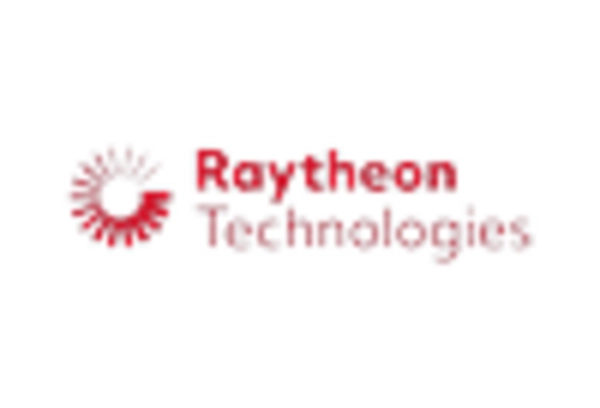Integration of Advanced Sensors
The integration of advanced sensors into military operations is a pivotal driver for the military iot market. These sensors enhance situational awareness by providing real-time data on troop movements, environmental conditions, and equipment status. The military's increasing reliance on data-driven decision-making necessitates the deployment of sophisticated sensor technologies. In 2025, the military iot market is projected to witness a growth rate of approximately 15% annually, driven by the demand for enhanced operational efficiency. The ability to collect and analyze vast amounts of data from various sensors allows for improved strategic planning and resource allocation, thereby optimizing mission outcomes. As the military continues to invest in sensor technology, the military iot market is likely to expand significantly, reflecting the importance of data in modern warfare.
Increased Investment in Cyber Defense
The rising threat of cyberattacks on military infrastructure is a significant driver for the military iot market. As military operations become more reliant on interconnected systems, the need for robust cybersecurity measures has intensified. In 2025, it is anticipated that military spending on cybersecurity will increase by 20%, reflecting the urgency to protect sensitive data and systems from potential breaches. This heightened focus on cyber defense is likely to spur innovation within the military iot market, as new technologies are developed to safeguard against cyber threats. The integration of advanced security protocols and real-time monitoring systems is essential to ensure the integrity of military operations. Consequently, the military iot market is expected to expand as defense agencies prioritize cybersecurity in their strategic planning.
Emergence of Smart Logistics Solutions
The emergence of smart logistics solutions is transforming supply chain management within the military, thereby driving the military iot market. These solutions leverage IoT technologies to optimize inventory management, track assets, and enhance the efficiency of logistics operations. In 2025, the military iot market is projected to grow by 10% as military organizations increasingly adopt smart logistics to streamline their supply chains. By utilizing real-time data analytics, military logistics can reduce waste, improve delivery times, and ensure that resources are available when needed. The integration of IoT devices into logistics processes allows for better visibility and control over supply chain activities, which is crucial for mission success. As the military continues to embrace smart logistics, the military iot market is likely to see significant advancements.
Focus on Enhanced Training and Simulation
The focus on enhanced training and simulation technologies is a key driver for the military iot market. As military forces seek to improve readiness and effectiveness, the integration of IoT into training programs is becoming increasingly prevalent. In 2025, the military iot market is expected to experience a growth rate of 14% due to the demand for realistic training environments that utilize IoT technologies. These technologies enable the creation of immersive simulations that replicate real-world scenarios, allowing personnel to practice and refine their skills in a controlled setting. The ability to collect data during training exercises also provides valuable insights into performance, which can be used to tailor future training programs. As the military prioritizes advanced training solutions, the military iot market is likely to flourish.
Growing Demand for Real-Time Communication
Real-time communication capabilities are becoming increasingly essential in military operations, driving the military iot market forward. The need for seamless communication among various units and command centers is critical for effective coordination and response during missions. In 2025, the military iot market is expected to grow by 12%, largely due to advancements in communication technologies that facilitate instant data sharing. Enhanced communication systems enable troops to receive timely updates and instructions, which can be crucial in dynamic combat environments. Furthermore, the integration of IoT devices into communication networks allows for improved interoperability among different military branches, thereby enhancing overall operational effectiveness. As the military prioritizes communication advancements, the military iot market is poised for substantial growth.

















Leave a Comment